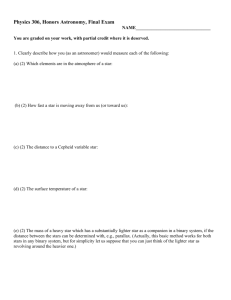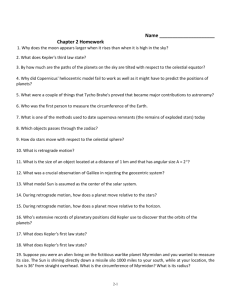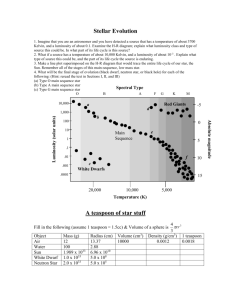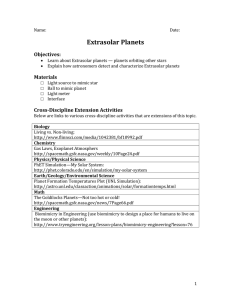Kepler exoplanet
advertisement
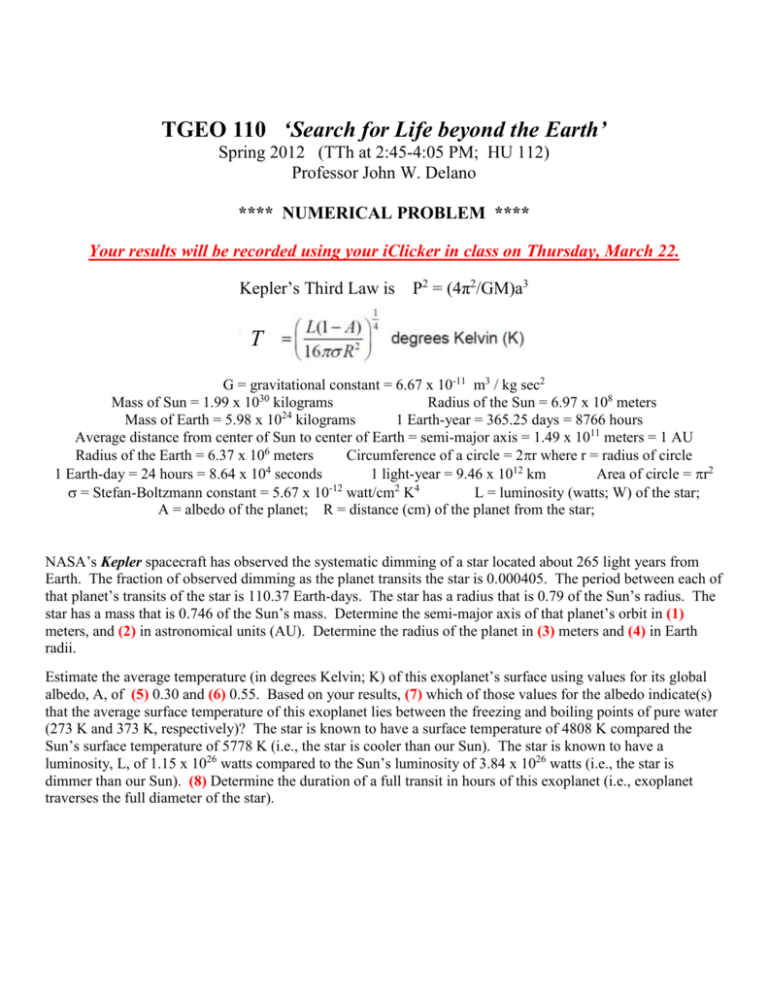
TGEO 110 ‘Search for Life beyond the Earth’ Spring 2012 (TTh at 2:45-4:05 PM; HU 112) Professor John W. Delano **** NUMERICAL PROBLEM **** Your results will be recorded using your iClicker in class on Thursday, March 22. Kepler’s Third Law is P2 = (4π2/GM)a3 T G = gravitational constant = 6.67 x 10-11 m3 / kg sec2 Mass of Sun = 1.99 x 1030 kilograms Radius of the Sun = 6.97 x 108 meters 24 Mass of Earth = 5.98 x 10 kilograms 1 Earth-year = 365.25 days = 8766 hours Average distance from center of Sun to center of Earth = semi-major axis = 1.49 x 1011 meters = 1 AU Radius of the Earth = 6.37 x 106 meters Circumference of a circle = 2r where r = radius of circle 4 1 Earth-day = 24 hours = 8.64 x 10 seconds 1 light-year = 9.46 x 1012 km Area of circle = r2 -12 2 4 = Stefan-Boltzmann constant = 5.67 x 10 watt/cm K L = luminosity (watts; W) of the star; A = albedo of the planet; R = distance (cm) of the planet from the star; NASA’s Kepler spacecraft has observed the systematic dimming of a star located about 265 light years from Earth. The fraction of observed dimming as the planet transits the star is 0.000405. The period between each of that planet’s transits of the star is 110.37 Earth-days. The star has a radius that is 0.79 of the Sun’s radius. The star has a mass that is 0.746 of the Sun’s mass. Determine the semi-major axis of that planet’s orbit in (1) meters, and (2) in astronomical units (AU). Determine the radius of the planet in (3) meters and (4) in Earth radii. Estimate the average temperature (in degrees Kelvin; K) of this exoplanet’s surface using values for its global albedo, A, of (5) 0.30 and (6) 0.55. Based on your results, (7) which of those values for the albedo indicate(s) that the average surface temperature of this exoplanet lies between the freezing and boiling points of pure water (273 K and 373 K, respectively)? The star is known to have a surface temperature of 4808 K compared the Sun’s surface temperature of 5778 K (i.e., the star is cooler than our Sun). The star is known to have a luminosity, L, of 1.15 x 1026 watts compared to the Sun’s luminosity of 3.84 x 1026 watts (i.e., the star is dimmer than our Sun). (8) Determine the duration of a full transit in hours of this exoplanet (i.e., exoplanet traverses the full diameter of the star).





